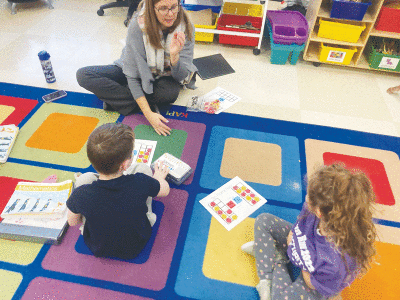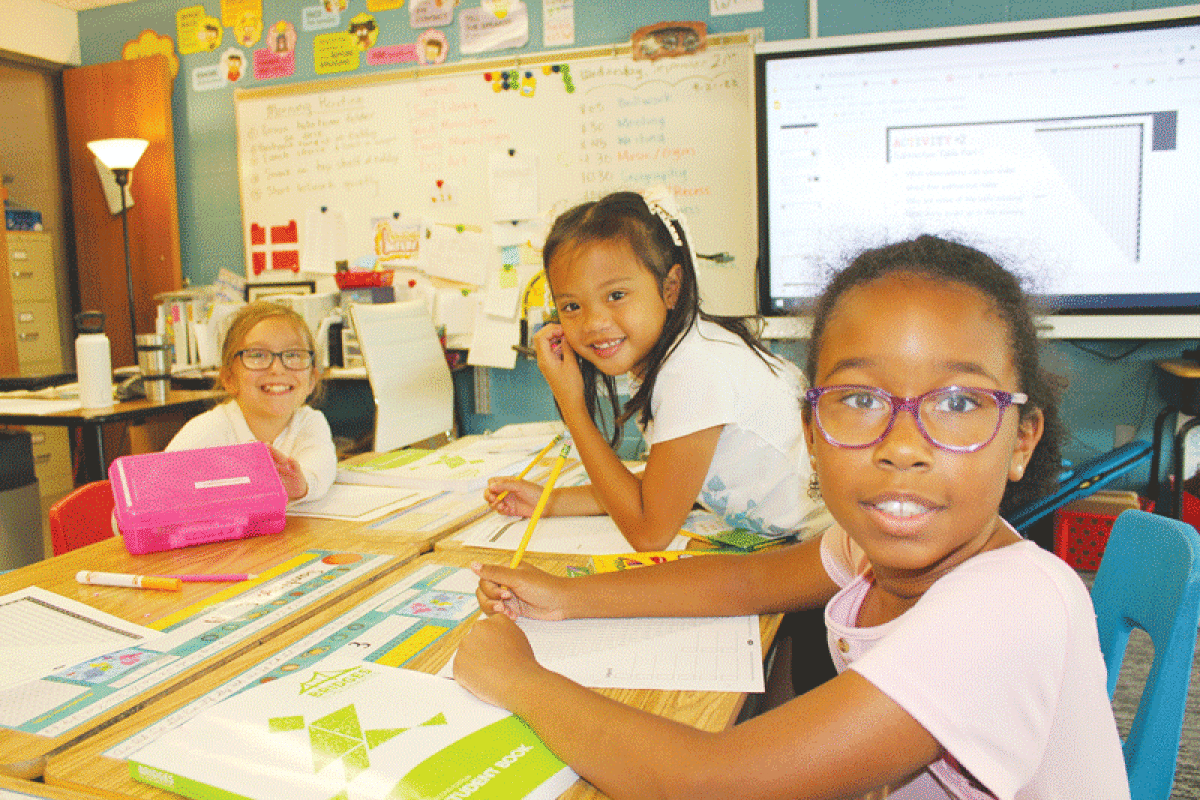
Birmingham Public Schools is piloting two math curriculums for students in kindergarten
Photo provided by Birmingham Public Schools
METRO DETROIT — It is common for schools to routinely reevaluate their curriculums to meet changing standards, and in the wake of the pandemic, many are studying innovative approaches to teaching math.
Logan Grabowski, the owner and center director of Mathnasium of Royal Oak, said they still see students who are struggling to catch up after pandemic-related setbacks.
Since the pandemic, online learning resources have become prevalent as educators have had to adapt. However, Grabowski said that he thinks a traditional style of learning is more beneficial to students, based on what he has seen.
“When you are working with more technology, there are more things that can potentially go wrong, which interrupts things and can make it more difficult to concentrate on the topic,” Grabowski said.
One of the districts leaning into a more hands-on and less online curriculum is Rochester Community Schools.
Rochester Community Schools is in its first full year of implementing Bridges in Mathematics at the elementary level. This was chosen after a comprehensive process involving the district’s students, educators, school board and parents, the district said.
Bridges in Mathematics is a K-5 curriculum resource that prioritizes students’ developing mathematical mindsets, officials said.
“One of the unique features of Bridges as a resource is a really heavy reliance upon this idea of having things concrete in kids’ hands,” elementary math consultant Kim Mroczek said.
By having math manipulatives such as fraction circles, dice and pattern blocks, students are led to the next levels of learning, including abstract learning.
Through these resources, students are encouraged to engage with math in a way that helps them understand it on a deeper level. Collaboration and hands-on learning are two major focal points of the program.
Bridges in Mathematics’ focus on collaboration and a deep understanding of math standards is similar to the Birmingham Public School’s new approach for kindergarten through eighth graders.
Birmingham Public Schools is in the process of implementing a new math curriculum, and they are piloting two different textbook curriculums: iReady Classroom Mathematics and Illustrative Mathematics. Each program has a suite of online resources.
“What these two resources offer us is an opportunity for students to not only engage in the common core math standards, but to also support students in digging into the standards for mathematical practice,” said Amber Davis, the district’s curriculum coordinator for secondary mathematics and science. “So it is not just about what students are learning in terms of content, but also what they are learning to do.”
Parents, students and community members were able to be involved in choosing the pilot programs, which were decided by the curriculum design team.
Another thing Grabowski said he often sees is a disconnect between the parents and the curriculum.
“A lot of times, I feel that the parents are not getting the full story in regards to what the lesson is for the student,” Grabowski said. “The student may be practicing something that is a piece of a larger picture, and the parent can have frustration in that regard because they can’t see the larger picture — they can just see they can’t answer the problem the way they were taught growing up.”
Rochester’s Bridges in Mathematics program has an at-home component.
Assistant Superintendent for Elementary Teaching and Learning Cory Heitsch said important parts of this process were accessibility, opportunity and caregivers at home.
The program is designed so that parents are able to be further included in their child’s education by understanding what they are learning at school.
Heitsch said they have previously had parents attach the phrase “new math” to what their children were learning, and then those parents were frustrated with not being able to support their child with their learning at home. Since math procedures have changed throughout the generations, this is a common issue. That’s why Bridges in Mathematics approaches the communication between parents, teachers and students with inclusivity and accessibility, he said.
 Publication select ▼
Publication select ▼






















